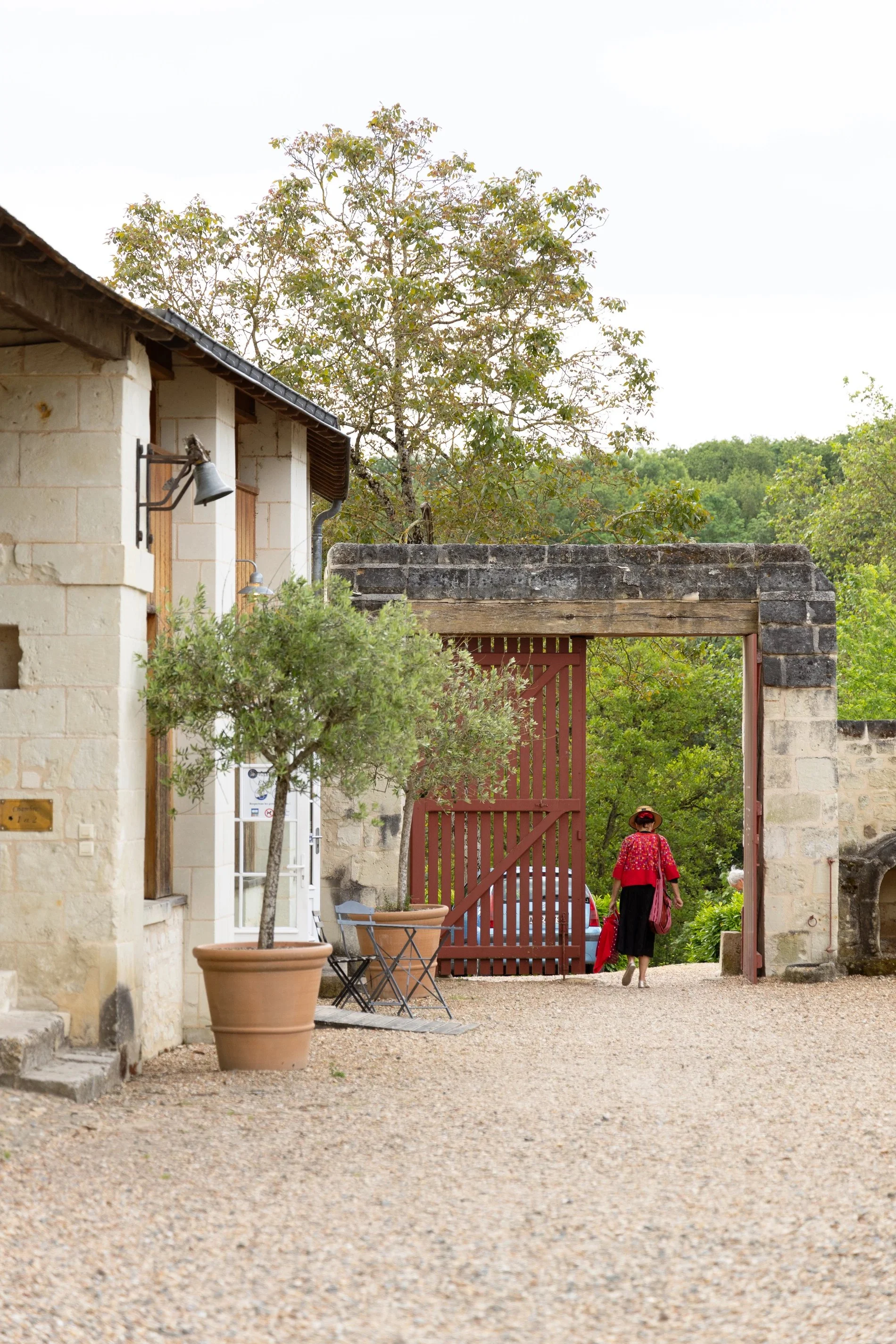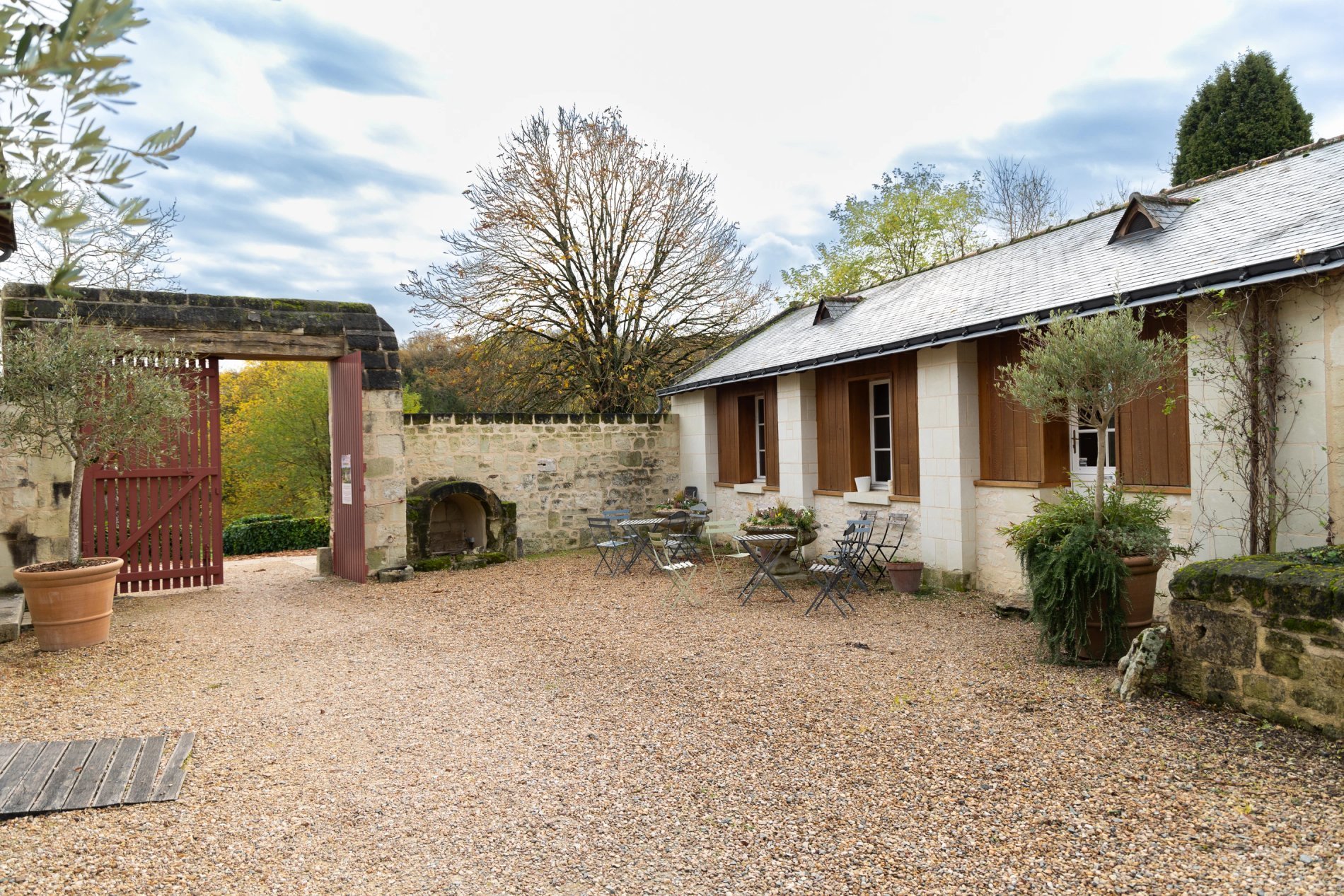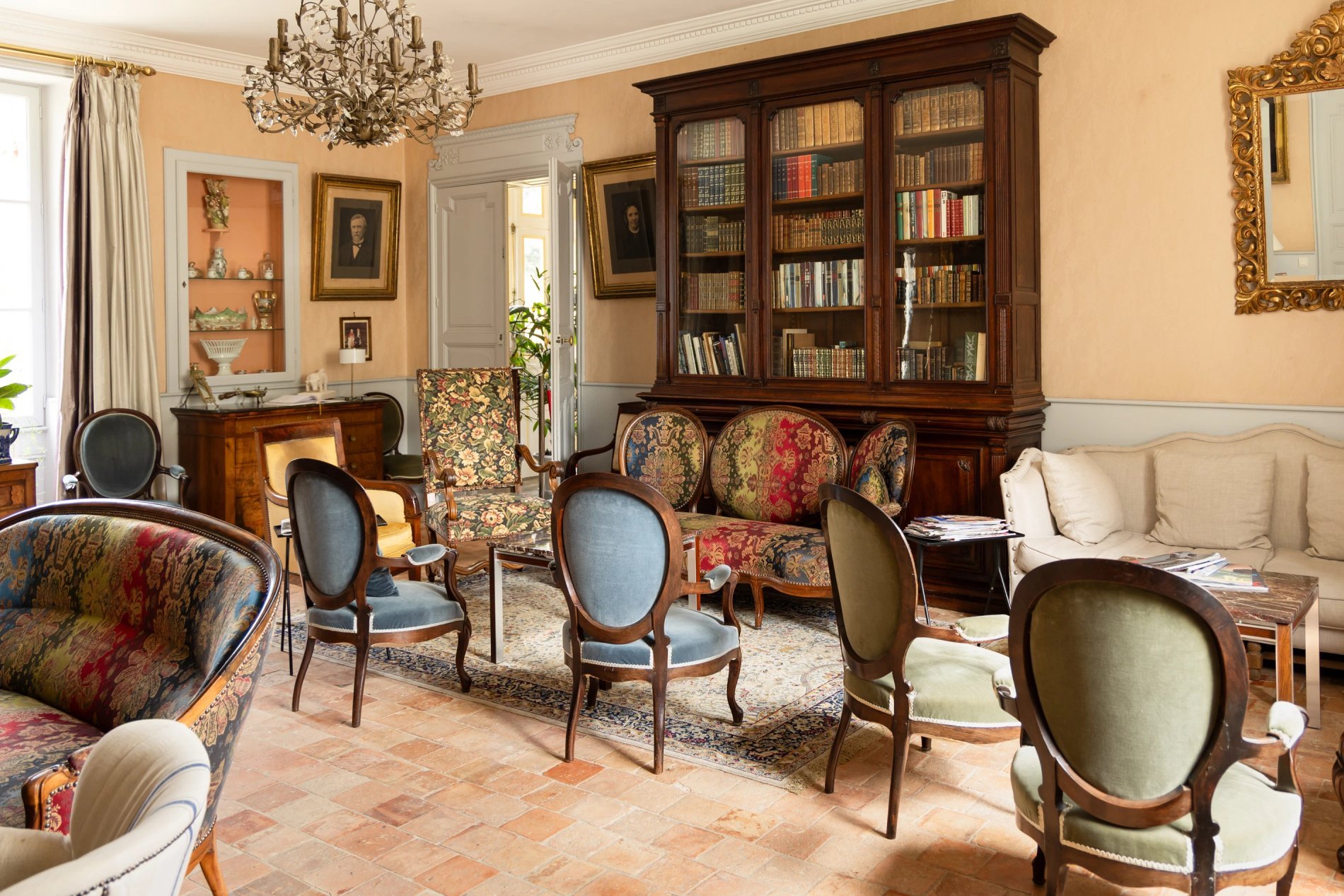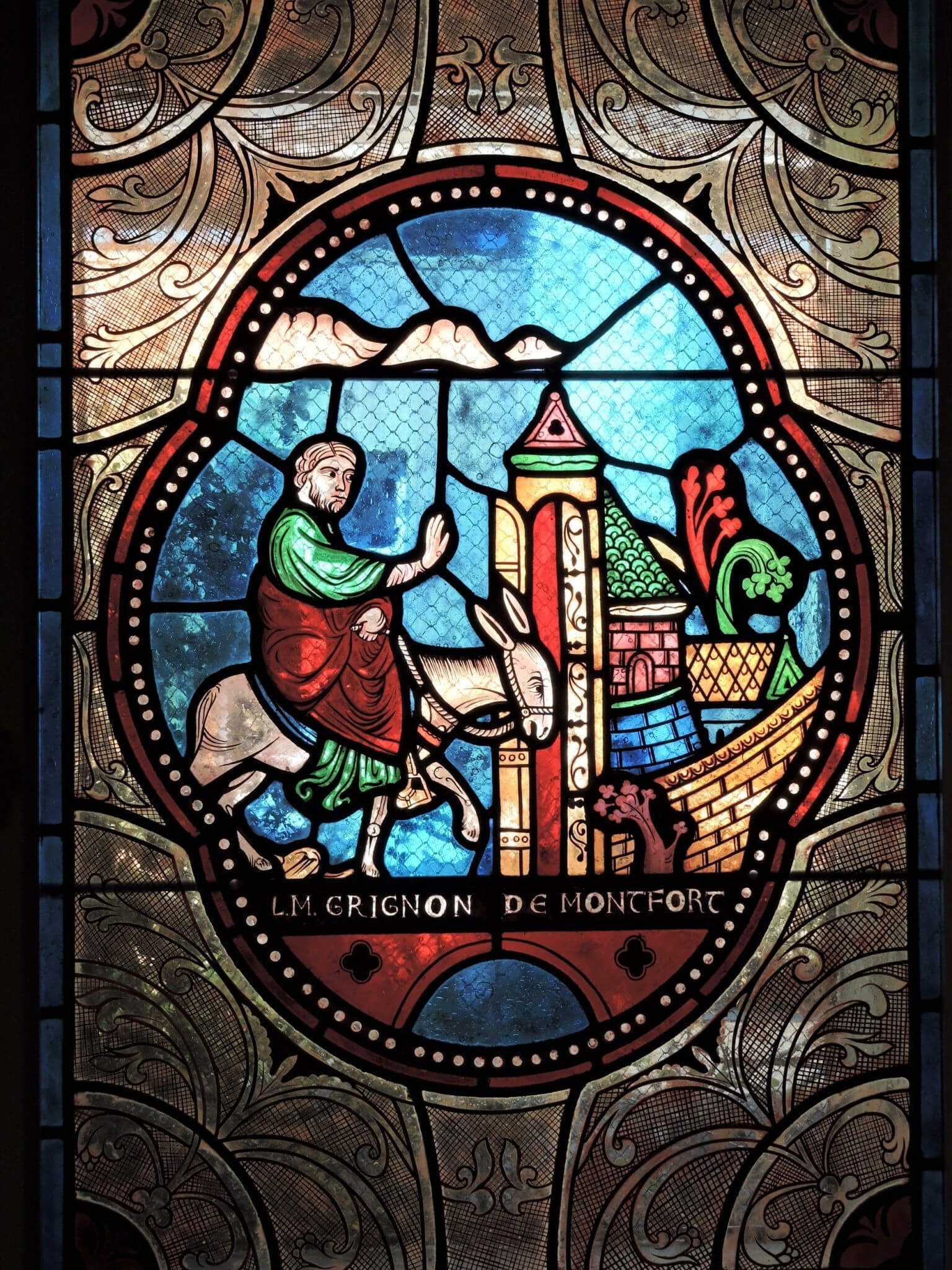The Mestré Estate
An exceptional domain
The Mestré Estate
Welcome to an exceptional domain
In the heart of a region of great tourism and rich in a wide variety of activities, "l'Hôtel de Mestré" is a privileged place and awaits you...
Our house was the main farm of the Abbey of Fontevraud. By staying at Mestré you will discover that this house has a soul and you will rub shoulders with history. Let yourself be immersed in this place...
Mestré is a haven of greenery. You will be seduced by the calm of the countryside, the peaceful atmosphere of the centuries-old trees and the gentle sound of the birds. Perhaps you'll be lucky enough to see a squirrel dance...
Mestré offers you a turnkey holiday: the comfort of a three-star hotel, a traditional restaurant, a bar and tea room service, aperitifs in the cellar, a hot bubble with swimming pool, spa and sauna, a garden and courtyards to stroll around in, an artisan soap factory with its charming perfumed boutique...
Our family welcomes yours
Since 7 March 1791, Mestré has been a family property. The house has essentially been handed down by women, echoing the Abbaye de Fontevraud which, in accordance with Robert d'Arbrissel's wishes, was run entirely by the Abbess Mothers. Several generations now live on the estate in a peaceful, family atmosphere. On your arrival, you will be greeted with a smile by one of the members of the house...
From the 12th century
Since the 12th century, the estate was called "l'hébergement du Domaine de Mestré"
On the barn we can still find today the scallop shell and the coat of arms of Renée de Bourbon, abbess of Fontevraud (16th century). These stones were scraped during the Revolution: Christ's crown of thorns, the Bourbon Lilies, and the Cross of the Royal Abbey whose authority depended directly on the pope and not on the bishop as was the custom.
233 years
On 7 March 1791 our family bought this farm, which was the main farm of Fontevraud Abbey. The buildings date from the 12th to the 17th century. The 12th-century barn was used as a hostelry for pilgrims on their way to Santiago de Compostela and for those on their way to Fontevraud Abbey. A scallop shell and the coat of arms of Renée de Bourbon (Mother Abbess of Fontevraud) engraved in the stone bear witness to this past. We had the coat of arms restored thanks to a drawing we found in the Angers archives, as the stones had been scraped away by revolutionaries who wanted to erase all traces of spirituality: Christ's crown of thorns, the Bourbon lily and the Abbess's crozier.
Next door is a small chapel (with its 12th-century crypt) where you can go to meditate. The monks made many changes in the 16th century, in particular to the 12th-century church (the imposing buttresses on the façade remain), which they transformed into a dwelling house in the 16th century (hence the mullioned windows with sculptures of small spiritual figures). This house was home to 12 governors, appointed by the Abbesses, who ran the farm and the 254 other estates that depended on it: wood cutting, fish (ponds), mills, bread ovens, reeds, etc.to complete the ensemble, a large 16th-century building bears witness to the monks' winegrowing past.
When they bought this house, our family were stone quarrymen and they began construction of two buildings, one in 1802 and the other in 1860. They had a roof structure built that is so beautiful and exceptional that it is even more imposing than that of the Château d'Amboise! These buildings were constructed on the foundations of former farm buildings destroyed during the French Revolution. Despite the many destructions, the Domaine de Mestré remains vast: 1 hectare of roof space.
During your stay, you'll be able to take full advantage of the size of this estate, moving from one building to another, from one era to another, from one atmosphere to another... Mestré is full of surprises!



































